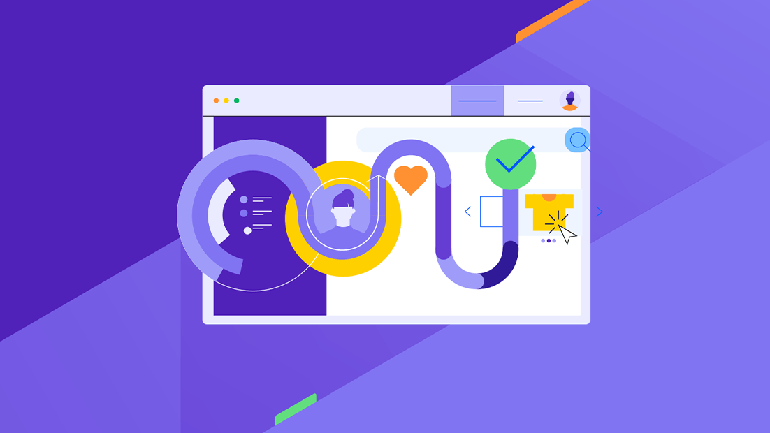How AI Is Transforming Customer Segmentation

AI-powered customer segmentation is about understanding users better so you can serve them better as individuals.
What if you could read your customers’ minds? Not in a creepy, invasion-of-privacy way, but in a way that allows you to truly understand what makes them tick, what they need and what they’re likely to do next. That’s what AI-powered customer segmentation is trying to achieve.
Customer segmentation isn’t new. Businesses have always tried to group their customers based on shared characteristics. But traditional segmentation methods often miss the mark in capturing how people actually behave and make decisions. In a world where customers interact with brands across dozens of touchpoints and expect personalized experiences, old approaches to segmentation simply can’t keep up.
Think about your own shopping habits. You might buy luxury items in one category but hunt for bargains in another. You probably use different devices at different times of day, respond to some marketing emails but ignore others and make decisions based on a complex mix of factors. Now multiply this complexity by millions of customers, and you can see why businesses need a better way.
Why Traditional Segmentation Falls Short
Before we dive into how AI is changing things, let’s look at why traditional segmentation approaches often don’t work as well as we’d like. Most companies have relied on basic demographic data like age, income and location to group their customers. While this information is useful, it often leads to oversimplified categories that don’t reflect real human behavior.
Take a retail example. A traditional segmentation might group all “suburban moms” together, assuming they have similar shopping habits. But within this group, you might have:
- Tech-savvy online shoppers who primarily use mobile apps
- Traditional shoppers who prefer in-store experiences
- Hybrid shoppers who research online but buy in-store
Each of these subgroups needs different messaging, different offers and different shopping experiences.
Or consider a B2B software company using traditional firmographic segmentation—grouping customers by company size, industry and revenue. They might miss important differences in how different organizations adopt and use technology, their internal decision-making processes or their specific pain points. Two companies that look identical on paper might need completely different sales approaches and support services.
Another common issue is that traditional methods tend to be static. They create rigid customer groups that don’t account for how people’s preferences and behaviors change over time. Someone who fits neatly into the “budget-conscious shopper” segment today might become more focused on convenience or quality next year. Life events, changing circumstances and even seasonal patterns can dramatically shift how people interact with your brand.
The limitations become even more apparent when you consider the wealth of data now available. Traditional segmentation typically relies on survey responses and basic transaction data.
But what about social media interactions? Website browsing patterns? Customer service interactions? Mobile app usage? Email engagement? All these data points tell part of the customer story, but traditional segmentation methods simply aren’t equipped to make sense of it all.
AI Changes the Game
AI can analyze and make sense of customer data in ways that humans simply can’t match. It spots patterns and connections that would normally go unnoticed, allowing businesses to move from broad groupings to more precise customer segments.
Take a financial services company as an example. Old-school segmentation might group customers by age, income and assets. But an AI system can look deeper—it can analyze:
- How people actually use their money
- What kinds of investments they prefer
- How comfortable they are with risk
- What’s happening in their lives that might affect their financial decisions
This detailed understanding helps create specific customer groups that better reflect real people. A bank might identify young professionals who mainly use mobile banking and want help with budgeting. For these customers, they could offer a user-friendly budgeting app, personalized savings advice and maybe even make saving money feel more like a game.
But AI doesn’t just help us understand customers as they are now. It can also predict what they might need or do next. A phone company could use AI to figure out which customers might switch to a competitor soon, allowing them to step in with better offers before that happens.
Creating Better Customer Experiences
AI segmentation can improve practically every interaction with customers. When trying to find new customers, AI helps identify who’s most likely to be interested in what you’re selling. It can help personalize content so each customer sees information that actually matters to them.
Consider a streaming service that uses AI to analyze viewing patterns. Instead of showing everyone the same movie recommendations, they can create micro-segments based on viewing history, time of day preferences and even how users browse through options. A parent who mostly watches family content during the day might see different recommendations than a young professional who streams action movies late at night.
Customer service gets better too. AI can predict what problems a customer might have and connect them with the right person to help. This makes things smoother for the customer and helps companies use their resources more efficiently. For instance, an electronics retailer might use AI to identify customers who recently bought complex devices and proactively offer setup assistance, rather than waiting for frustrated customers to call with problems.
For keeping customers happy and loyal, AI makes a real difference. It can spot early warning signs that a customer might leave, letting companies take action before it’s too late. It also helps identify and reward the most valuable customers, building stronger relationships over time.
The Foundation of Effective AI
As with any AI application, the quality of the insights is only as good as the quality of the data. Biased, incomplete or inaccurate data can lead to misguided segmentation and flawed decision-making.
Data quality is a significant challenge that requires constant vigilance. The old saying “garbage in, garbage out” is especially true for AI. For improved accuracy and reliability of AI-driven segmentation, businesses need to invest in robust data governance, including regular data audits, cleansing and standardization.
This is not just a technical issue, but also a cultural one. Everyone in the organization, from the C-suite to the front lines, needs to understand the importance of data quality and their role in maintaining it. This requires ongoing education, clear policies and procedures, and a commitment to data-driven decision-making at all levels.
Plus there’s a delicate balance to strike between personalization and privacy. Customers appreciate relevant, tailored experiences, but they can quickly feel violated if the targeting feels too invasive or if their data is mishandled. Businesses must be proactive in communicating their data practices, providing easy opt-out mechanisms, and rigorously protecting customer information.
Concluding Thoughts
AI-powered segmentation is more than just a fancy way to sort customers—it’s about understanding people better so you can serve them better. It’s moving away from the “spray and pray” marketing approach toward something more thoughtful and targeted.
To make the most of AI segmentation, it’s essential to have a comprehensive, unified view of each customer. This means integrating data from various touchpoints and systems, such as web analytics, CRM, point of sale and social media.
Progress Sitefinity Insight is an extensive example of a Customer Data Platform (CDP) that enables this holistic customer view. By consolidating data from diverse sources, Sitefinity Insight allows for the creation of rich, 360-degree customer profiles that can drive personalization across channels. Unlike basic data collection tools, Sitefinity Insight gives you the deep understanding you need to create truly personalized experiences.
We’re moving toward a future where broad, generic marketing messages and one-size-fits-all experiences won’t cut it anymore. Companies that succeed will be those that can understand and respond to each customer’s individual needs. Getting there won’t be easy. It requires investing in technology, hiring the right people and sometimes completely changing how your company operates. But the companies that figure it out will have a huge advantage.

